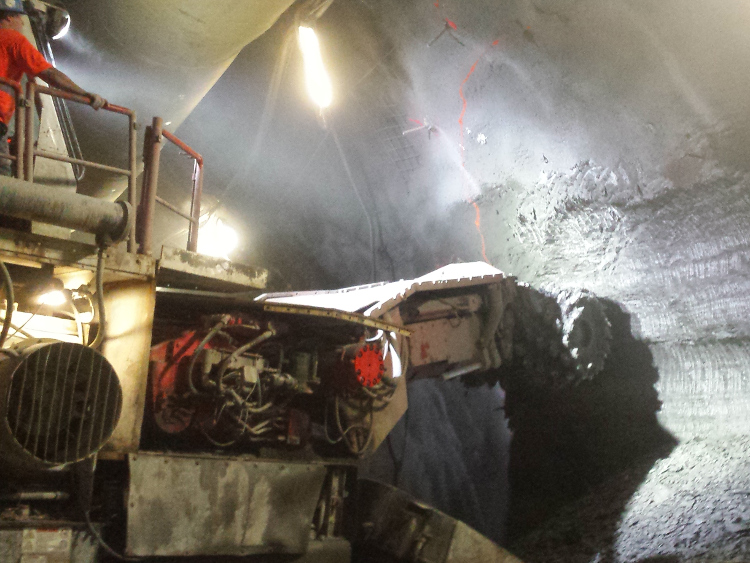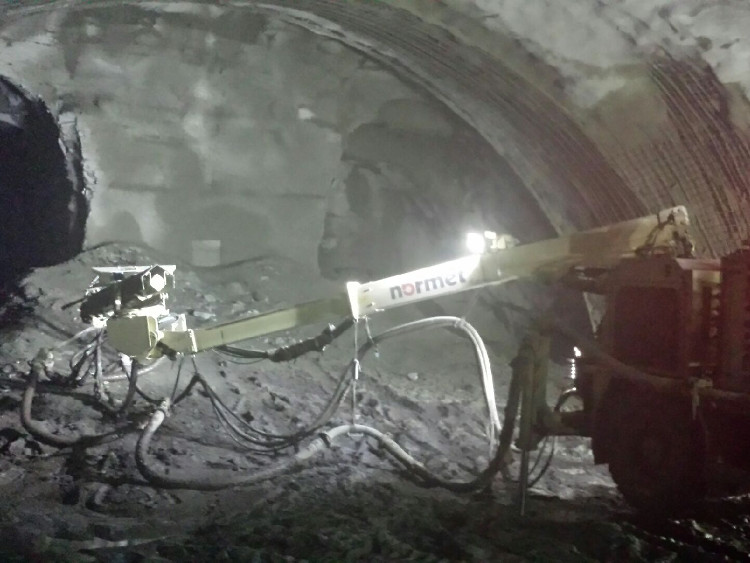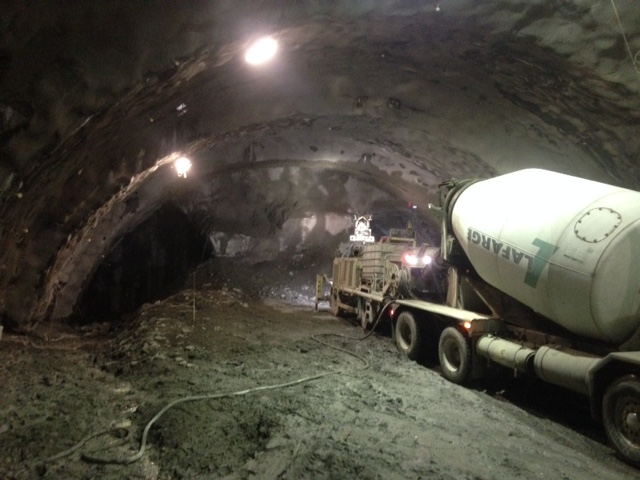Mining resumes on Ottawa Confederation Line 04 Aug 2016
The majority of Confederation Line construction activities in Ottawa, Canada, have resumed around Rideau Street following the sinkhole event of June 8, with underground work scheduled to restart this weekend.
Water main and utility repairs are completed and Rideau Station west entrance has been repaired, sidewalks are open to pedestrians and the roadway has reopened to transit services and taxis. Work at the Rideau Station cavern, west entrance and east entrance, is also underway.
The restart of construction activities follows a month-long review of all existing infrastructure and safety measures. This weekend Rideau Transit Group, and its design-build contractor team of ACS Infrastructure, Dragados and SNC-Lavalin, will resume work beneath Rideau Street between the Rideau Station cavern and east of Sussex Drive. This work is in preparation for the resumption of tunneling which will begin early next week. Approximately 50m of excavation remains to complete the 2.5km-long tunnel (Fig 1).
The City of Ottawa, RTG, and its tunneling experts will be on-site, both above ground and within the tunnel, monitoring all construction activities. The tunnel is being mined using the sequential excavation method (SEM). Additional support including pipe roofing, lattice girders and face bolts will be installed to reinforce the tunnel; and systematic drainage and grouting is being undertaken to mitigate any loose or potentially unstable ground.
Monitoring of the ground and adjacent buildings is ongoing, with increased monitoring of the newly installed water mains to detect any settlement or leaks. "Overall, construction of the Confederation Line LRT project remains on schedule," said Steve Cripps, Director of Ottawa's Rail Implementation Office.
Face failure on Ottawa LRT excavation 14 Jun 2016
There were no injuries and there was no damage to surface structures, but it was a significant sinkhole that opened up above the LRT tunnelling works in downtown Ottawa at 10.30am Wednesday morning last week (8 June 2016). The loss of material created a sinkhole of about 28m wide x 40m long and about 5m deep and took some 2,700m3 of concrete to stabilize.
The collapse came within the last 50m of the total 2,532m long underground section of the first LRT line for the Canadian capital city. Tunnelling crews were advancing the last heading of the single-tube double-track running tunnel from the Parliament Station cavern into the west end of the completed Rideau Station cavern (Fig 1). Work was also progressing on a cut-and-cover entrance from the street into Rideau Station as part of a new shopping mall development on Rideau Street and carried out by the Ottawa LRT authority.
The 9m wide x 6.5m high double-track tunnel was progressing under Rideau Street and through a section identified in the geological investigation as a buried valley in the prevailing limestone bedrock and infilled with what was described in the geological report as dense to very dense glacial till (Fig 2). Through this section, excavation was advancing under an overburden of 25m as a multi-face sequential operation.
According to information provided to TunnelTalk from the project construction team, the crown of the tunnel at the point of the incident was still in limestone and there was no indication of surface settlement from the instrumentation monitoring. As the sequential headings advanced across the interface into the buried valley, instead of dense glacial till, saturated mud broke through the tunnel face with an inrush of water. The structure of the primary supported tunnel itself remained intact.
The loss of material through the tunnel face eventually migrated to create the surface sinkhole, breaking utility lines and rupturing a water main to fill the void rapidly with swirling water. Rideau Street was closed to normal traffic during excavation in the area, except for buses and taxis. A public bus had recently passed over the collapse zone, but in the event the property loss amounted to a private company van that was parked on the street, a streetlight installation, and a vehicle working on the adjacent cut-and-cover access ramp which fell into the void.
The 12.5km long Confederation Line is being built as a design-build-finance-and-maintain contract by the Rideau Transit Group (RTG) consortium for a Can$1.2 billion fixed-price delivery contract awarded in December 2012. The international consortium is led by ACS Infrastructure of Spain, with Dragados of Spain and Montreal-based SNC-Lavalin Constructors as the main construction partners; and a team of consulting and design engineers that includes the SNC-Lavalin design division, Hatch Mott MacDonald, Dr Sauer & Partners, and system operator Veolia Transportation. The 2.5km long central underground section includes three underground stations and has been excavated using heavy, powerful roadheaders through mostly competent limestone.
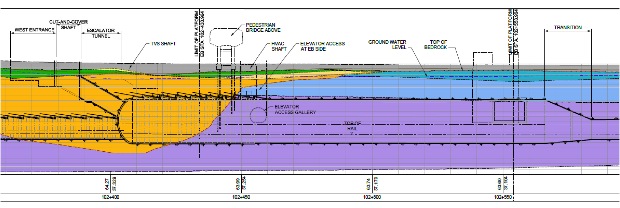
Fig 2. Event occurred on the west side of the infilled glacial valley as excavation progressed towards the completed Rideau Station
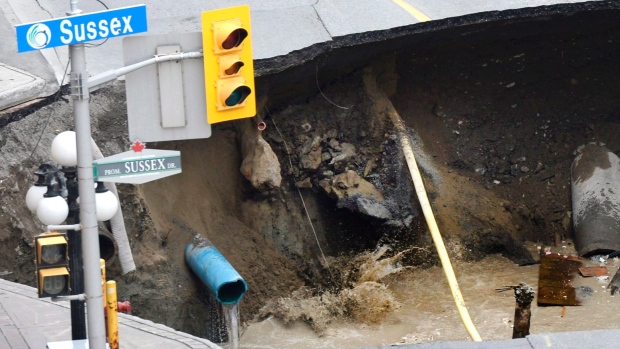
Close up of the silty clay and loose gravel of the infilled glacial valley (Credit: Jusin Tang/Canadian Press)
The exact initiation or cause of the face collapse is under continuing investigation, but the glacial till conditions of the buried valley in the limestone was known and appropriate excavation methods had been adopted by the construction crews. Persistant leaking of water from the network over a long period of time is a suspected preliminary cause of the mud and its inrush.
At a news conference on Wednesday afternoon, after the incident, Steve Cripps, Director of Ottawa's Rail Implementation Office, told reporters that special precautions were taken on that section of the tunnel and that the city and the Rideau Transit Group consortium had met regularly with a mining and tunnelling consultant engaged to provide specialist advice on that stretch of tunnel. Cripps is reported as saying: "Certainly the city has been aware, and RTG has been aware for a number of years, about the soil conditions in that area, and they have taken extensive precautions to deal with it," adding that comprehensive monitoring systems are installed in the area and on adjacent buildings to detect any ground movements.
Cripps however stopped short of linking the sinkhole to the soil conditions. "We don't know if these soil conditions have caused this. It is really too early to speculate," he said. It is also unclear how the incident will impact on progress of the LRT project towards its completion and start of operation due date in 2018.
As concrete backfill of the surface void progressed, work continued underground in the tunnel headings. According to information from the construction team, normal activity in the running tunnel from the Rideau Station east side continued while on the west side the inrush of water ran back to the deepest part of the alignment at Parliament Station for pumping out. Once the water is removed a consolidation process will be progressed to secure the face while the plan for completing this last 50m of excavation is developed.
A smaller sinkhole under shallow cover at the east portal from the surface into the underground alignment in 2014 was filled with 700m3 of concrete and was attributed to a ruptured water pipe leaking into uncompacted backfill of open-cut utility works.
Between the two events, excavation of 2,500m of single-tube double-track running tunnel and three underground station caverns, has been completed without cause for concern or incident.
References
- Ottawa awards $2.1 billion Confederation Line – TunnelTalk, December 2012
- Ottawa manages excavation ground run – TunnelTalk, February 2014
|
|
|
|
|
Add your comment
- Thank you for taking the time to share your thoughts and comments. You share in the wider tunnelling community, so please keep your comments smart and civil. Don't attack other readers personally, and keep your language professional.






